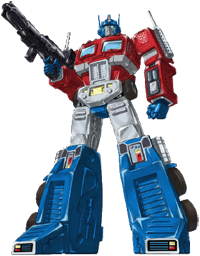 Like many of my generation, I grew up watching a lot of cartoons. One of which was Transformers and like with many shows of that era many of my childhood friends owned the toys as well. We would play Autobots and Decepticons in our respective gardens, re-enacting the aeon long struggle between mechanical good and evil. Of all the mecha franchises birthed in Japan, Transformers is one that has the greatest amount of cultural common ground in the West; there’s an almost implicit understanding of how these fictional living machines operate.
Like many of my generation, I grew up watching a lot of cartoons. One of which was Transformers and like with many shows of that era many of my childhood friends owned the toys as well. We would play Autobots and Decepticons in our respective gardens, re-enacting the aeon long struggle between mechanical good and evil. Of all the mecha franchises birthed in Japan, Transformers is one that has the greatest amount of cultural common ground in the West; there’s an almost implicit understanding of how these fictional living machines operate.
Yet, for all this commonality the vast majority of the games that attempt to re-produce those afternoons of toy robot battling end up being disjointed and functionally quite fractured.
I’ve already covered something similar about the various Macross games, as that franchise has a very close mechanical linkage to Transformers, but the issue here isn’t a technical and logistical one but a cultural one in regards to the ability of learning from what has gone before.
Before I even get started, it’s worth clarifying one very important point; Transformers as we know it in the West started as a follow-on toyline from the Takara Microman range in Japan. It was originally known as Diaclone and featured the benign Cybertron robots and their evil Waruder counterparts. The main mecha designers on this were Shoji Kawamori and Kazutaka Miyatake, both of which would go onto work on Macross and steer the real robot transformation for the next quarter of a century.
Understanding that Transformers began in Japan helmed by two renowned mecha designers is crucial in untangling the subsequent awkward game mechanics used in the last decade of tie-ins. As the mecha genre of gaming has very much evolved in-line with the mythos that inspires it, whereas Transformers has existed in an almost singular manner in the West.
However this singular approach is an artificially created one borne of far less noble motivations than simple incompetence. It’s a forced form of cultural ignorance stemming from an excess of pride – as the means and information to make these games better exists abroad, yet this resource has been wilfully ignored.
The following four games have been chosen to highlight this situation, as they are all third person shooters of a sort all of which trying to execute the same premise (though with wildly varying implementation, despite the forcibly standardised genre framework).
The final two entries are obviously multi-platform tie-ins but I’ve covered the Xbox 360 releases in case anyone is wondering.
Transformers Tataki (2003)
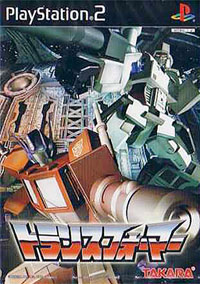 This game was the first in the line of mecha third-person shooter games, unlike the other games, this featured the Generation One mecha and narrative. Interestingly, the developer behind this, winky soft, had quite a long history of working with mecha based franchises. They’d helmed a lot of the more challenging Super Robot Wars games for the Saturn and PlayStation (notably that of F and F Final) as well as the excellent Macross: Scrambled Valkyrie on the Super Famicom. In short, they were no stranger to the culturally bespoke rule sets the genre requires, especially in regards to transformation and how that effectively changes the game you’re playing on the fly.
This game was the first in the line of mecha third-person shooter games, unlike the other games, this featured the Generation One mecha and narrative. Interestingly, the developer behind this, winky soft, had quite a long history of working with mecha based franchises. They’d helmed a lot of the more challenging Super Robot Wars games for the Saturn and PlayStation (notably that of F and F Final) as well as the excellent Macross: Scrambled Valkyrie on the Super Famicom. In short, they were no stranger to the culturally bespoke rule sets the genre requires, especially in regards to transformation and how that effectively changes the game you’re playing on the fly.
So whilst winky soft had the experience with the genre, they unfortunately didn’t have the technical budget to deliver a shiny third person action game on the PlayStation 2. What transpired was a technically average game plagued with a fair few issues regarding the spatial effectiveness of melee combat.
That said, the transformation abilities were used extensively and sympathetically with the license, as transformation used energy and had to be deployed tactically. In addition, after extended play it was very obvious that a lot of the more restrictive elements of the game added an intended element of strategy (this was especially true of the wingmen placement).
Generally, this game doesn’t review well but a lot of that is based around lack of the graphical veneer in the eyes of the Western press rather than the functional elements. This game was also never released outside of Japan, despite the extensive use of English voice overs.
Unfortunately, the remaining tie-ins get functionally worse after this.
Transformers (2004)
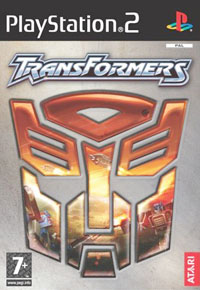 This followed Tataki about a year later and featured mecha from the Armada series, it was developed by Melbourne House (who are now known as Krome Studios) and featured an extensive amount of publicity in the West due to its impressive game engine.
This followed Tataki about a year later and featured mecha from the Armada series, it was developed by Melbourne House (who are now known as Krome Studios) and featured an extensive amount of publicity in the West due to its impressive game engine.
This is where a different set of issues start to surface with the games, as the focus now is more about trying to make a pedestrian third person shooter rather than a mecha game that features transforming robots.
Specifically, this game almost actively hindered the player in regards to using the transformation abilities of the mecha and instead forced the player to rely on run-and-gun shooter mechanics. There were also some very awkward platform sections later on in the game which also felt very out of place.
The game engine was very impressive but it suffered from serious framerate issues that made a lot of the more frenetic encounters actually quite nauseating. It also didn’t help that the extensive use of motion blur made tracking enemies even harder. So even as a pedestrian third person shooter, it really didn’t work very well.
Ultimately, the game itself was functionally pretty poor as consequence of all this. However, the graphically impressive game engine garnered a favourable following in the press and it reviewed better as a result.
Transformers: The Game (2007)
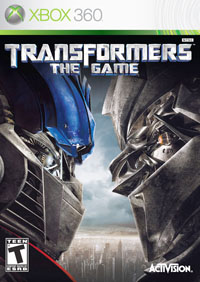 This was the first of the recent movie tie-ins and developed by Traveller’s Tales, the studio behind the various Lego games. The design mandate was still an obviously standardised one; in that it forced the mecha into a third-person shooter framework. However, the mistakes that Melbourne House had made weren’t really acknowledged or learnt from and instead of following on from that, Traveller’s Tales went down an even more open world route.
This was the first of the recent movie tie-ins and developed by Traveller’s Tales, the studio behind the various Lego games. The design mandate was still an obviously standardised one; in that it forced the mecha into a third-person shooter framework. However, the mistakes that Melbourne House had made weren’t really acknowledged or learnt from and instead of following on from that, Traveller’s Tales went down an even more open world route.
Now, that isn’t necessarily a bad thing to do and actually affords greater usage of the transformation abilities of the mecha themselves, which they thankfully did, but Traveller’s Tales decided to make a raft of all new mistakes regarding how the core combat played out.
In short, the camera was the biggest problem as it swayed with the mecha as it walked. This was something used quite subtly in games like Gears of War, which is most probably where the influence stemmed. Unfortunately, when you scale up the protagonists you’re effectively putting a lot of leverage on the camera, so it will sway more and make most players feel quite queasy.
Initially, this wasn’t an issue as the earlier mecha weren’t that big. So whilst it was annoying it was hardly game breaking. However, when bigger mecha became more prevalent, such as Optimus Prime and Megatron, the camera swayed massively and coupled with the fact that by that point most of the enemies were half your size you ended up looking at the ground whilst the camera was swaying uncontrollably. Cue retching and a re-acquaintance with the contents of your stomach.
There were also some other very odd elements as well, such as the inability to transform into vehicle form mid-air as an Autobot and a lag animation delay when you started to climb up a building. The latter was very obvious during the Shockwave boss fight, where you had to effectively do a form of robot parkour to get to each area that the boss had relocated to.
Overall, this game was equally as awkward as the prior Melbourne House effort but this manifested itself in different areas of implementation. It was again as though any prior knowledge of games involving Transformers and mecha in general were wilfully ignored.
Transformers: Revenge of the Fallen (2009)
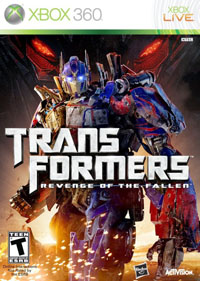 The latest iteration to grace the series and, yes, a whole new raft of functional issues have plagued this game. It’s clear though that Activision have more of a direct input across these film tie-ins, as there is an element of broad functional continuity between the titles but like with many publishers, they don’t understand how to implement functionality in a cogent way as they’re on the outside looking in often without a technical grasp of what their design requests will ultimately manifest themselves as.
The latest iteration to grace the series and, yes, a whole new raft of functional issues have plagued this game. It’s clear though that Activision have more of a direct input across these film tie-ins, as there is an element of broad functional continuity between the titles but like with many publishers, they don’t understand how to implement functionality in a cogent way as they’re on the outside looking in often without a technical grasp of what their design requests will ultimately manifest themselves as.
Fundamentally, this game and the prior Traveller’s Tales effort are quite similar – they afford similar abilities such as the robot parkour, comparable level layouts and emphasis on third person shooter functionality. Thankfully, the camera nonsense is absent but it’s been thoroughly replaced by another set of bizarrely awful problems.
To transform into vehicle mode you now have to pull and hold the right trigger. This means your hand can often end up in a form of painful hand cramps over prolonged sessions. To make matters more unfortunate, to control the throttle you have to use the same trigger. So you’re often in the situation of trying to reduce speed only to transform back into robot mode. This is exacerbated by the fact there is no sufficient in game messaging to telegraph how close you are to transformation.
This alone is pretty damning but on top of this some bright spark thought it worth coupling the face buttons with transformation, such as advanced jumps, so you’re literally wrangling basic manoeuvres from what can only be described as a Rubix cube inspired interface (don’t even get me started on the hover controls). What transpires is a game that should be fairly straightforward in terms of the rule set, after all it’s pretty much a copy-and-paste third person shooter but ends up being incredibly counter intuitive in terms of its controls. More so than complex games such as Armored Core, as at least the controls are consistent and logical in relation to the game’s varied rule sets.
It’s worth clarifying one matter though, a few people have cited Piranha Games’ involvement with this tie-in and that they’re upcoming MechWarrior game will be similarly awkward. Examining the credits shows that they’re involvement was purely aesthetic, not functional. So I’m at least cautiously hopeful that Piranha will do MechWarrior and Battletech proud, so long as they watch some Dougram first.
None shall stand…
Ultimately, all of these games are poor entries into the varied pantheon of mecha gaming. However, winky soft’s initial entry is the one I have more sympathy for as they clearly had a much smaller budget than all the other games and that reduced their technical scope considerably. That said, if the subsequent developers had taken their head out of the robotic rectum they might have been able to learn from winky soft’s unfortunate mistakes and build something better next time around. Instead, arrogance limited their scope and they ended up making all new disparate mistakes. Couple this with the fact that the third person shooter genre is so hugely oversubscribed the inability to at least get those core mechanics right is nigh on criminal.
Whilst a lot of credence is given to the technical achievements of Western development, all of which are hard earned and entirely justified I should add, when it comes to functional achievement we still need a swift anecdote from arrogant complacency and cultural myopia.
Considering the uncharacteristically discouraging tone of this entry to the column, I feel compelled to temper that by finishing off with some constructive comments on how properties like Transformers should be approached from a functional point of view in future.
- Robots aren’t people – Games like Assassin’s Creed and Gears of War may initially appear a good fit for re-appropriation when it comes to a mecha game, but they’re functionally very disparate approaches. The obvious and main problem is that the scale of mecha is several orders larger than that of a human, so the rule sets that define Marcus Fenix and Altaïr won’t fit to a considerably larger mecha. The mechanics aren’t scalable from one size to another. You’ll end up with controls that a noticeable input lag and all sorts of awkward camera problems, that’s just for starters. Even human sized power armour doesn’t fit, as the functional parameters are exaggerated within human scale – so you end up at the opposite end of the spectrum; like trying to control a rocket powered kite. Instead of just looking at sales data in regards to an aesthetic genre match (such as a third person shooter), someone somewhere needs to make an informed decision on whether that will actually work with large fictional robots (though in most cases, they won’t).
- Make your mind up – Either make a standard third person shooter or a mecha game, don’t try a bizarre halfway house of both.
- Real world physics shouldn’t be applied to imaginary objects – Mecha aren’t real and break many laws of physics, even the designs that try to be plausible. Using middleware like Havok and PhysX may seem like an obvious route to take, as it often works well with games focused around human protagonists, but with mecha it just doesn’t (look at what happened to Gundam Target in Sight if you don’t believe me, as that extensively used PhysX). Now there is an argument for successful implementation of real world physics middleware but it needs to be discerning and sympathetic with the fictional rule sets already well established. In short, until you know a lot more about the mecha mythos in general – leave real world physics well alone.
- What it says on the tin – If the game’s title has “Transformers” written all over it, you might want to consider basing the game around a transformation mechanic and making it accessible to most gamers. Just an idea mind.

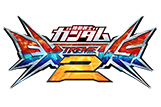









I personally think an objectives based team Transformers game could work well: Say something like Battlefield or Team Fortress 2 but with Transformers characters. Instead of getting into vehicles scattered around the map, the players ARE the vehicles: You could even make it so larger transformers are able to house smaller ones (IE. Like Astrotrain did all the time in G1).